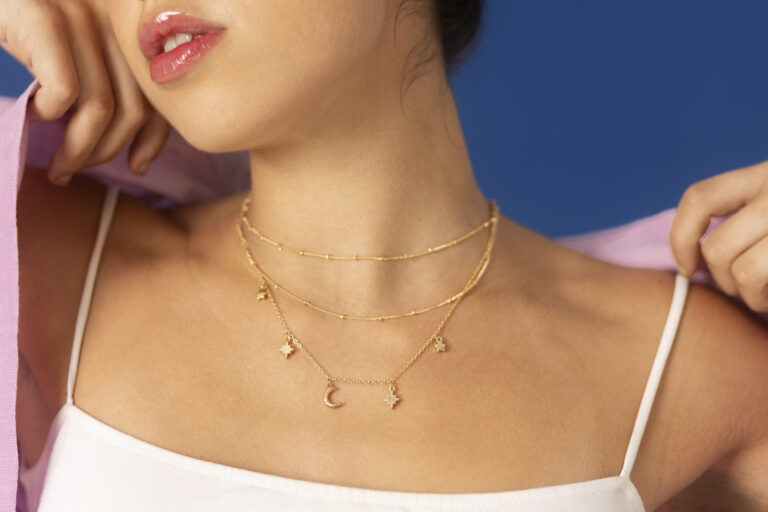
Identify Authentic Vintage Cartier Jewelry
Vintage Cartier jewelry represents an exquisite blend of luxury, artistry, and timeless elegance.
However, with the rising popularity of these stunning pieces, the market has seen an influx of counterfeit items.
This article will guide you through key factors to consider when identifying authentic Vintage Cartier jewelry, ensuring you can confidently invest in genuine pieces that reflect the brand’s celebrated craftsmanship and quality.
By understanding the nuances of engravings, metal purity, weight, hallmark styles, and design elements, you’ll be better equipped to discern authenticity from imitation.
Cartier Logos and Engravings
The accuracy of the Cartier logo font and the engraving depth plays a critical role in verifying the authenticity of vintage Cartier jewelry.
Cartier consistently uses a precise, serif-style font that maintains a clean and symmetrical appearance, with sharp edges and balanced proportions.
The font should never appear irregular, messy or inconsistent, as these are signs of forgery.
In authentic pieces, the logo is etched cleanly into the metal—not stamped or printed—and always with even stroke weight and correct alignment.
Equally important is the engraving depth: genuine Cartier engravings penetrate the metal with uniform intensity, revealing confident craftsmanship without being overly deep or barely visible.
According to this detailed guide on Cartier authenticity, variations in depth often signal reproduction attempts.
While genuine Cartier engravings display precise alignment, even spacing, and flawless spelling, counterfeit pieces often reveal themselves through uneven carvings or inconsistent typeface.
For example, fake pieces may show logos that are either too thick or too shallow, or suffer from misspelled names like “Cattier”.
These issues are immediately apparent when comparing with a verified piece, where block-letter engravings remain consistent throughout models and periods.
In addition, authentic serial numbers are etched directly into the metal and are fully integrated with the design, unlike replicas that may use superficial stickers or off-center placement, as emphasized in this expert authentication article.
Careful attention to these small details provides vital clues when distinguishing a genuine Cartier from a forgery.
Purity Stamps
Understanding how to read 18K and 750 marks is essential when authenticating vintage Cartier jewelry.
Both markings indicate that the piece is made of 75% pure gold, aligning with the industry standard for 18 karat gold.
The 750 mark represents this in parts per thousand, a hallmark commonly used in Europe.
Cartier consistently applies these purity stamps on inconspicuous yet logical surfaces: inside bands of rings, near clasps on bracelets, or along the chain tag of necklaces.
Placement matters — stamps embedded symmetrically with sharp, evenly spaced characters signal authenticity and fine craftsmanship.
Misaligned or faded purity stamps often indicate wear or potential counterfeits.
Precision is critical, because real Cartier takes pride in flawless stamp execution, verifying both gold content and brand legitimacy.
| Mark | Gold Purity | Description |
|---|---|---|
| 18K | 75% | Indicates 18 karat gold |
| 750 | 75% | Denotes 750 parts per thousand gold |
Historical Hallmark Styles
Matching hallmark design to its production era is essential for authenticating vintage Cartier jewelry.
Cartier hallmark styles evolved notably by decade, so observing the engraving’s shape, font, and positioning helps date a piece.
For example, a hallmark styled in a 1930s oval often reflected Cartier’s Art Deco aesthetics, using platinum or white gold paired with geometric font engravings.
By contrast, a 1960s rectangular hallmark featured cleaner lines and bolder stamps.
Hallmarks from the 1970s onward began to include serial numbers etched more precisely, not printed or on stickers.
When a hallmark’s format or font does not align with its supposed production decade, this usually signals a counterfeit.
For a deeper dive into hallmark authenticity, the Cartier hallmark archive by Lang Antiques offers helpful verification examples.
Serial Number Verification
Serial number placement on vintage Cartier jewelry varies by item type, yet always follows a consistent logic rooted in precision.
On bracelets, the serial number placement is typically on the back of the clasp or discreetly etched along the edge of a link, strategically hidden to avoid distracting from the design.
For brooches, you’ll find the number near the pin mechanism or along a narrow inner edge.
Vintage Cartier watches have their serial numbers engraved directly into the back case, never printed or added with a sticker.
According to guidance from collectors, you can refer to The Back Vault’s Cartier Authentication Guide for clear examples of what to expect.
Format consistency is essential to authenticity.
Cartier used defined serial patterns over time, such as:
- Check that the number is deeply stamped, not lightly etched
- Look for proper formats, like “12345 A” or “AA 1234”
- Verify the serial using official Cartier archives or trusted experts
Weight and Metal Density
Assessing weight consistency and metal density is crucial when identifying authentic vintage Cartier jewelry.
Expert appraisal often begins with verifying that the piece matches the standard weight specifications of Cartier, known for using dense metals such as 18K gold and platinum.
Counterfeiters frequently substitute lighter alloys, producing under-weighted imitations that feel noticeably different.
To ensure authenticity, collectors should follow these steps:
- Use a calibrated scale to compare against known Cartier specs, which are often listed by retailers like The RealReal.
- Check for substantial weight—authentic Cartier items feel heavier due to high-density craftsmanship.
- Request a metallurgical analysis for suspected counterfeits to detect impure or lightweight alloys.
Design Alignment and Precision
Symmetry and artisan craftsmanship define the heart of genuine vintage Cartier jewelry.
When examining authentic pieces, you should immediately notice their impeccable balance—motifs are perfectly aligned, components are seamlessly joined, and every element reflects Cartier’s meticulous design standards.
In contrast, counterfeit items often reveal their lack of precision through slightly misaligned screws, off-center gemstones, or poorly finished borders where metal meets motif.
For example, a fake Love bracelet may display uneven spacing between its iconic engravings, with one screw motif tilted or larger than its match.
More subtle flaws, such as inconsistent depth in engravings or crooked logos, quickly betray the lack of true Cartier mastery.
These discrepancies highlight the absence of the refined human touch practiced by skilled Cartier artisans.
To understand the differences better, this guide to identifying authentic Cartier bracelets demonstrates how subtle misalignment exposes counterfeits despite their superficial resemblance.
Vintage Cartier jewelry is a treasure that deserves to be cherished.
By applying the guidelines outlined in this article, you can navigate the complexities of authenticity with ease, ensuring that your collection remains both valuable and genuine.




